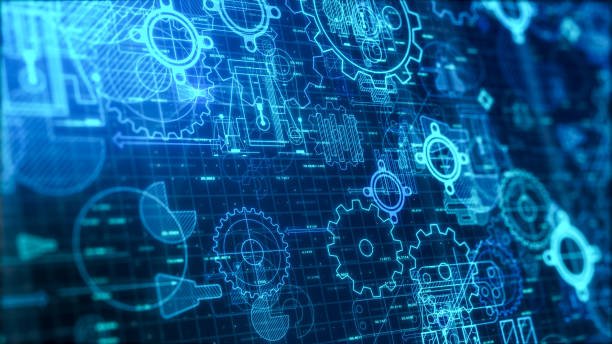Presentation: Part Innovations
In the reliably created universe of development, progress expects a basic job in the improvement of stunning structures and applications. These parts, every now and again implied as programming or hardware parts, are the designs that block the development of discrete and down-to-earth systems. In this article, we will plunge significantly into the universe of part propels, exploring what they are, their sorts, and their significance in the state-of-the-art tech scene. We will also offer valuable models and responses to routinely presented requests to work on your cognizance.

Innovations imply the key design blocks of a system or application. They are individual, autonomous units of programming or hardware that can be integrated to make greater, astounding systems. These parts are expected to do unambiguous jobs and can be reused across different endeavors, saving time and resources in programming progression and progressing estimated quality in gear arranging.
Parts can be viewed as what might measure up to LEGO blocks in the tech world, allowing fashioners and experts to assemble and reassemble them to make a large number of systems specially designed to express necessities. Whether it’s an item module at risk for data taking care of or a hardware chip that handles input/yield undertakings, parts are central to building strong and flexible game plans.
- Types of Part Innovations
- Programming Parts
Programming parts are pieces of code that serve a specific purpose inside an item application. These parts can go from fundamental capacities or libraries to complex modules that have wide convenience. A couple of ordinary cases of programming parts include:
- Libraries are pre-made sets of capacities or classes that can be imported and used in a program. Models consolidate the Standard Format Library (STL) in C++ and the Answer library in JavaScript.
- Frameworks: complete game plans of libraries and instruments that give a foundation to making express sorts of purposes. Models recollect Ruby for Rails for web progression and TensorFlow for simulated intelligence.
- Microservices are nearly nothing—independently deployable programming parts that are bestowed through APIs (application programming points of association). Microservices configuration is customarily used in building versatile and solid applications.
- APIs are association focuses that grant different programming parts or structures to team up and exchange data. APIs enable blends between programming applications, for instance, connecting a versatile application with a cloud-based informational index.
Equipment Parts: Part Innovations
Gear parts are real parts that make up electronic devices and structures. These parts integrate chips, memory modules, sensors, and different facilitated circuits. Gear parts can be arranged as follows:
- Integrated Circuits (ICs): These are tiny electronic circuits that contain semiconductors, resistors, and capacitors on a single chip. ICs are the building blocks of most electronic devices, including microcontrollers and focal processors.
- Sensors are gear parts that recognize and answer changes in their ongoing conditions. Models integrate temperature sensors, development locators, and light sensors.
- Microcontrollers: little, free enlisting devices that consolidate a chip, memory, and data/yield peripherals. They are consistently used in embedded structures.
- Printed Circuit Sheets (PCBs): Sheets that host and interconnect different gear parts in electronic devices PCBs give a genuine plan to parts that cooperate.
Significance of Part Innovations
Part progressions offer a couple of imperative advantages in the improvement of programming and hardware structures:
- Reusability: Parts can be reused in various exercises, reducing improvement time and costs. This advances viability and consistency across applications.
- Separation: Parts are free, making it more direct to make, test, and stay aware of individual bits of a system without impacting the entire errand.
- Adaptability: Systems developed using parts can be successfully scaled by adding or displacing parts based on the circumstances, obliging changes or essentials.
- Collaboration: Gatherings can work on different parts while developing compositional exertion and accelerating improvement cycles.
- Upkeep: Part-based structures are more straightforward to stay aware of and update since changes can be separated from express parts without influencing the entire system.
Practical Uses of Part Innovations
Part progress is extensively used in various organizations and applications. The following are a couple of practical models:
- Web Headway: Web applications oftentimes use programming parts like libraries and frameworks to manage endeavors like client checks, data limits, and UIs.
- Vehicle Industry: Current vehicles rely upon gear parts like sensors, microcontrollers, and integrated circuits to control everything from engine execution to safe structures.
- Clinical consideration: Clinical contraptions coordinate gear and programming parts for abilities like noticing patient crucial signs and conveying careful estimations of medication.
- Avionics: Aviation systems in planes use hardware parts for course, correspondence, and control, ensuring safe and strong flight.
- Cells: Phones coordinate countless hardware parts like focal processors, touchscreens, cameras, and programming parts like working systems and versatile applications.
Challenges To some extent, evidence-based improvement: Part Innovations
While certain headways offer different advantages, there are also challenges connected with their execution.
- Similitude: Ensuring that item and hardware parts work perfectly together can be a confounded endeavor, especially while overseeing outcast parts.
- Framing: Managing different variations of parts and conditions can provoke likeness issues and require careful version control.
- Security: Shortcomings in individual parts can introduce security threats to the entire structure, making it key to reliably revive and fix parts.
- Documentation: Thorough documentation is fundamental for understanding how to use and organize parts, and lamentable documentation can ruin improvement.
- Approving: Specialists ought to adhere to allowing plans and authorized development honors while using pariah parts to avoid real issues.
Future Examples To a limited extent, advances: Part Innovations

The field of advancement is reliably creating A couple of emerging designs include:
- Microservices and Serverless Plan: These techniques are based on making uncommonly specific, versatile, and useful structures by breaking applications into additional, unassuming, and unreservedly deployable units.
- Edge Enrolling: The development of edge contraptions and the prerequisite for low-inactivity dealing with them are driving the improvement of part progress updated for edge handling conditions.
- Man-made Knowledge Further developed parts: artificial intelligence and modernized thinking are being integrated into programming and gear parts to overhaul their abilities and flexibility.
- Quantum Enlisting Parts: As quantum figuring grows, new gear parts are being made to harness the power of quantum processors for express applications.
Conclusion of Part Innovations
Innovations are the basis of current programming and hardware systems, enabling creators and draftsmen to manufacture perplexing and successful plans. They offer reusability, estimated quality, flexibility, and composed exertion benefits, making them basic in various endeavors. Regardless, challenges associated with similitude, security, and documentation ought to be carefully tended to.
As development continues to progress, advancements will play an urgent part in embellishing the destiny of handling. Whether it’s the improvement of autonomous vehicles, keen metropolitan regions, or best-in-class man-made knowledge applications, parts will remain at the center of headway, allowing us to make logically present-day and interconnected structures.

FAQs: Part Innovations
Q1: What is the qualification between a section and a module in Part Innovations?
A1: While the two terms are frequently used, on the other hand, a module is a free piece of code inside a program, while a section is a greater, reusable unit that can be facilitated into different endeavors. Parts are more granular and can wrap various modules.
Q2: Can you give an outline of a gear part in a wireless?
A2: Totally! The camera module is a piece of equipment on a PDA. It consolidates the camera sensor, point of convergence, and related equipment, and it works independently to get photos and accounts.
Q3: How should I ensure the security of the programming parts in my application?
A3: To work on the security of programming parts, regularly update them to fix known shortcomings, direct code studies, and execute security best practices, for instance, input endorsement and access controls.
Q4: Are microservices a kind of programming part?
A4: To be sure, microservices can be seen as a kind of programming part. They are pretty much nothing—free organizations that complete unambiguous jobs inside a greater application and can be reused in different settings.
Q5: What is the occupation of printed circuit sheets (PCBs) in hardware parts?
A5: PCBs provide the genuine plan and interconnectivity for various gear parts in electronic contraptions. They go about as the “skeleton” that grants parts to convey and cooperate.
By understanding the various universes of progress, you can utilize their capacity to make innovative and capable arrangements.

1 thought on “Elevating Part Innovations: The Mighty Quest for Success”